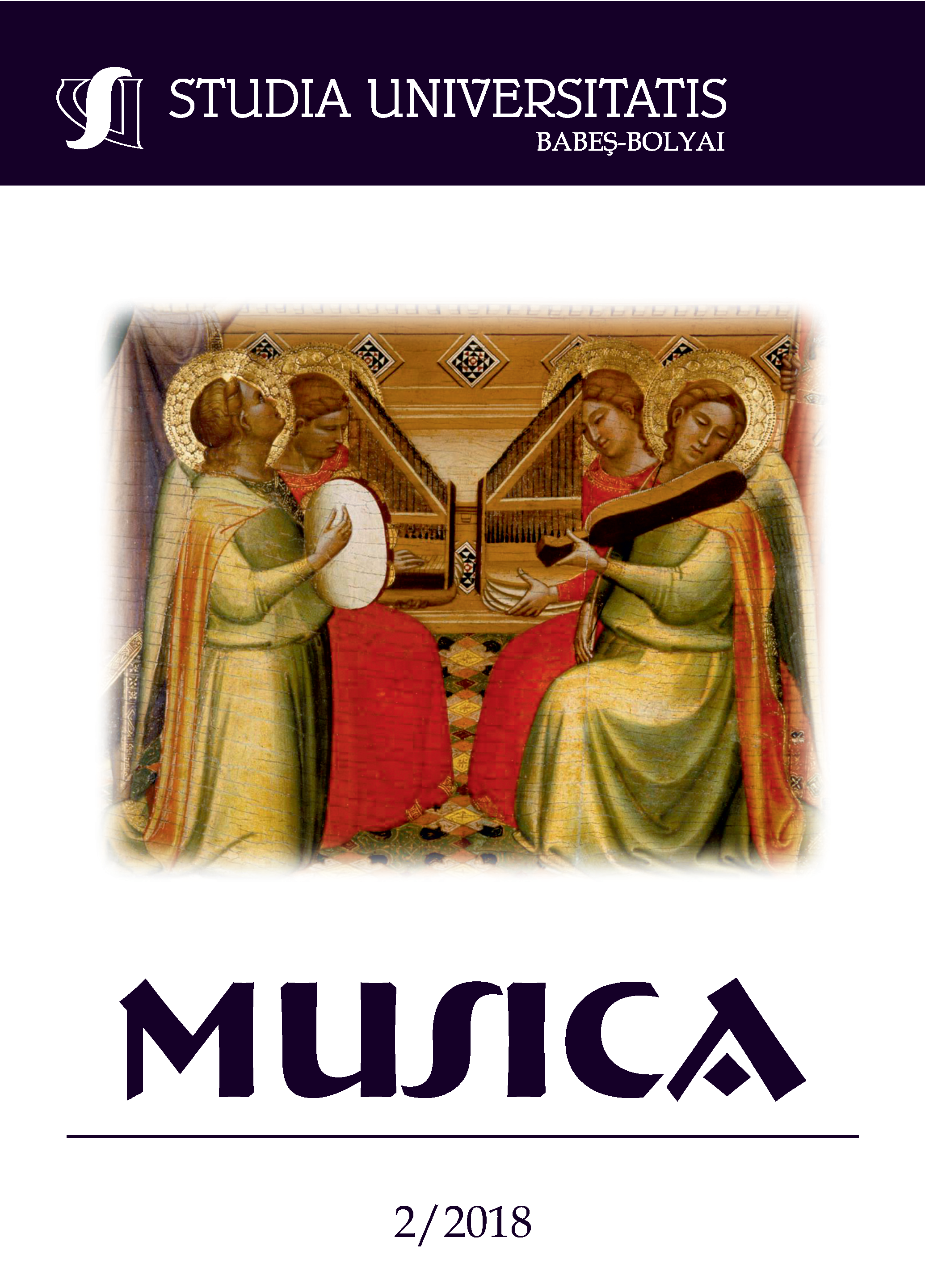HAUNTING SOUNDSCAPES OF TRANSYLVANIA: LIGETI’S RESEARCH STAY AT THE FOLKLORE INSTITUTE IN BUCHAREST
DOI:
https://doi.org/10.24193/subbmusica.2018.2.21Keywords:
Ligeti, Enescu, Romanian folk music, Iron Curtain, Bucharest, Transylvania.Abstract
Ligeti’s visit to the Folklore Institute in Bucharest in 1949/50 was a brief but defining episode of his youth, and one which proved to have a strong impact on his work. As one of the least explored stages of his early development, this Romanian research stay provided the composer with an entirely new set of ideas which were later manifested in his works, first as direct citations (Baladă și joc, Romanian Concerto, Musica ricercata, Bagatelles for Wind Quintet), and then as distant, barely discernible echoes (Piano Concerto, Violin Concerto, Hamburgisches Konzert). According to Ligeti’s own comments and manuscript sketches (held at the Paul Sacher archives), he derived and developed some of his most original compositional techniques from folk genres such as colinda, hora lungă, bucium signals and bocet originating in Transylvania, Banat and Muntenia, music he heard in various villages of the Carpathian region, and on wax cylinders in Bucharest. In order to show the long-term impact of Romanian folklore on his music the approach will capture two images of Ligeti on either side of the Iron Curtain: first it will explore how he managed, without political compromise, to avoid falling foul of the rules of the communist regime on the use of ethnic elements in the new ideology aesthetics and then how he turned this source of inspiration into a uniquely modern idiom after relocating to the west. Employing Romanian folk elements while in eastern and, later, in western Europe, Ligeti allows the listener to perceive the diverse multi-ethnic roots of his music, which pervaded his inspiration and generated a unique sound world.
References
***, The manuscripts of the Ligeti Collection of the Paul Sacher Foundation, Basle.
Brînduş, Nicolae: ”Interviu cu György Ligeti (Interview with György Ligeti)”, in Muzica, No. 1/ January 1980, Bucureşti, pp. 40-41.
Lazăr Cosma, Octavian: Universul muzicii româneşti. Uniunea Compozitorilor şi Muzicologilor din România - 1920-1995 (The Univers of Romanian Music. The Society of the Composers and Musicologists of Romania – 1920-1995), Editura Muzicală a U.C.M.R., Bucureşti, 1995
Ligeti, György: "Egy aradmegyei román együttes” ("A folk Romanian band from the Arad region”), in Kodály Elmékkönyv. Zenetudományi Tanulmanyok I, Akadémiai Kiadó, Budapest, 1953.
Ligeti, György: ”Népzenekutatás Romániában” ("Research on Romanian Folk Music”), in Új Zenei Szemle, I/3, August 1950, Budapest, pp.18-22.
Ross, Alex: The Rest is Noise, Picador, New York, 2007.
Steinitz, Richard: “The Innate Melodist" in György Ligeti’s Cultural Identities (Amy Bauer and Márton Kerékfy eds.), Routledge, Abingdon, Oxon - New York, 2018, pp. 68-69.
Ţiplea Temeş, Bianca: "Where Two Worlds Meet: Ligeti and Romanian Folk Music”, in Studia UBB Musica, Cluj University Press, No. 2/2012, pp. 85-97.
Țiplea Temeș, Bianca: “Ligeti’s Romanian Concerto. From Wax Cylinders to Symphony Orchestra”, in Studia UBB Musica, no.1/2013, Cluj University Press pp. 51-72.
Țiplea Temeș, Bianca: “Ligeti and Romanian Folk Music. An Insight from the Paul Sacher Foundation“ in György Ligeti’s Cultural Identities (Amy Bauer and Márton Kerékfy eds.), Routledge, Abingdon, Oxon - New York, 2018, pp.120-138.
Varga, Bálint András: György Kurtág; Three Interviews and Ligeti Homages, Rochester: University of Rochester Press, 2009.
Voicana, Mircea: George Enescu. Monografie, Ed. Academiei Republicii Socialiste România, Bucureşti, 1971.
Downloads
Published
How to Cite
Issue
Section
License
Copyright (c) 2018 Studia Universitatis Babeș-Bolyai Musica

This work is licensed under a Creative Commons Attribution-NonCommercial-NoDerivatives 4.0 International License.






